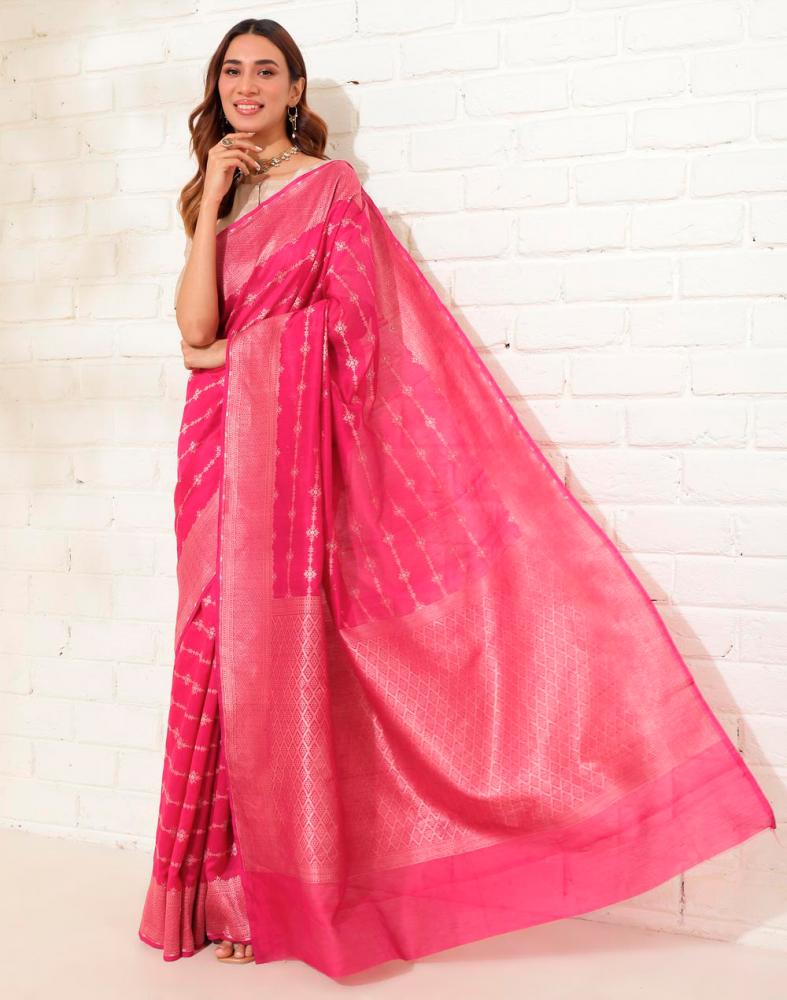THE Festival of Lights, popularly known as Deepavali, marks the beginning of something new as Hindu devotees celebrate the victory of good over evil.
For this reason, Indians will usually dress in new clothes on the first day of the festival, especially traditional attires. As such, sarees are one of the most traditional outfit for women. Historically, the Kanchipuram silk saree, one of the oldest fabrics, dates back to the Chola dynasty about a thousand years ago.
The Kanchipuram silk saree is woven in the Kanchipuram city in Tamil Nadu, its namesake, and it is made using Mulberry silk threads. Dubbed one of the most luxurious and expensive textiles, these delicate threads are gently handwoven using traditional tools to weave sarees with Indian motifs and patterns.
While still traditional in its essence, the saree has evolved over time, making itself a nine-yard timeless piece of material, especially with the growing popularity of South Asian fashion.
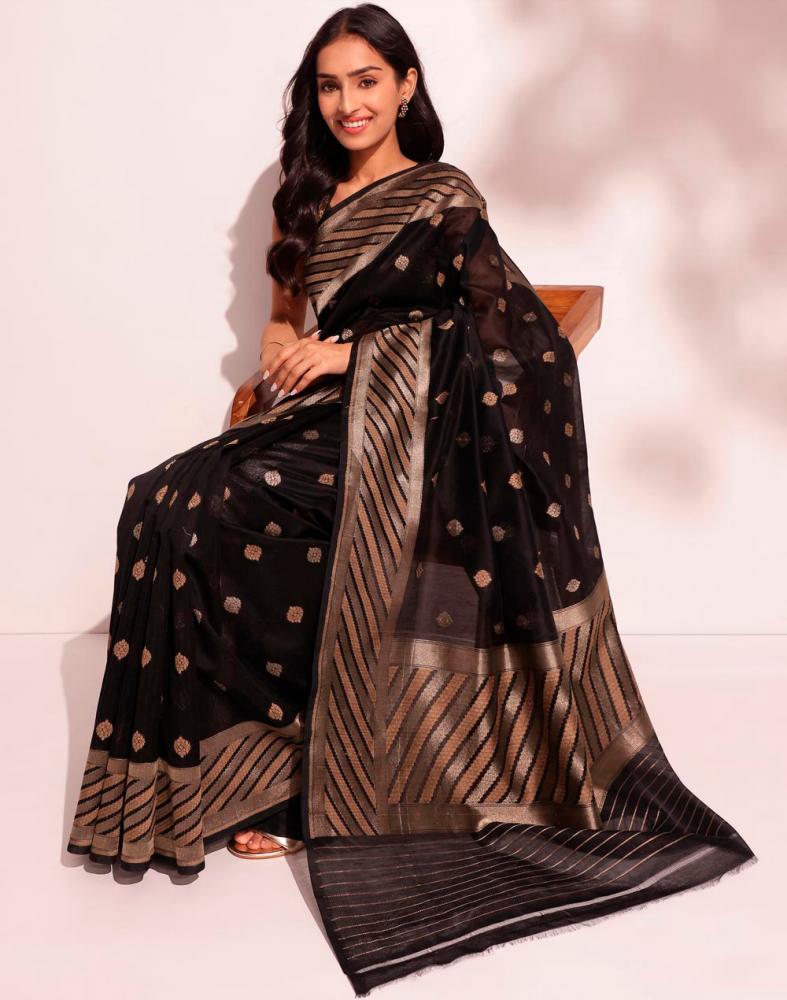
Over the years, Indian fashion designers have created innovative designs that challenge the traditional philosophy of sarees by incorporating modern designs into the textile.
Suffice to say, sarees will never go out of style due to their variety in design, exquisite craftmanship and fabric quality. Traditional designs such as Gopuram, Yali and Vanasingaram are still immensely popular in sarees.
The noughties era saw sarees adopting Western fashion trends, such as ruffles, asymmetrical cuts and frills – a poetic metaphor as borders were blurred with the rise of the internet. This phenomenon spawned a rather unique sub-sect in the Indian fashion scene – Indo-Western.
Sarees that were predominantly made with threads of cotton and silk were then manufactured using textiles such as chiffon, georgette and organza. So, to further explore the enigmatic wonder of sarees, theSun scoured Brickfields, dubbed Little India, to look for the best boutiques with the most stylish sarees.
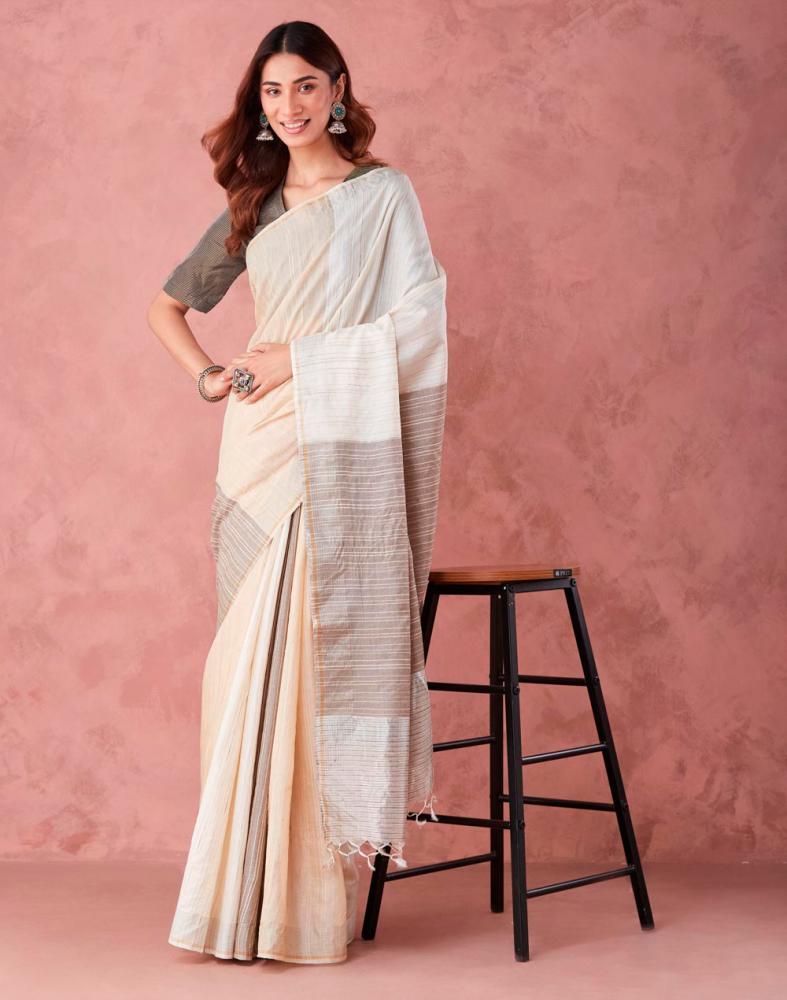
Draped in culture
If you are looking for exquisite saree designs, try exploring silk, cotton or cotton-silk blend sarees that are lightweight, easily draped and versatile, such as chiffon, georgette or organza materials.
For quality fabric and woven sarees, there are several options at the Fabindia outlet, located at Nu Sentral in Kuala Lumpur. It carries a variety of silk, cotton and cotton blend sarees in many hues, accentuated by quissential Indian motifs. Even its plain sarees with just gold borders exude timeless elegance.
Some of its natural silk saree only had a plain border but the premium feel of the sarees’ natural silk fabric makes it luxurious. The outlet’s cotton-silk blend sarees were class craftmenship, especially a black one with a statement border.
These sarees are easily styled to match any saree blouse designs – be it intricate embroidery patterns, beadwork, encrusted details or embellishments.
You can also pair them with simple and minimalist blouses and let the sarees shine on their own. The sarees on display at the outlet would pair well with a deep V-neck or heart-shaped neck, cap sleeves or fan-strap blouses, made popular by Bollywood actress Alia Bhatt.
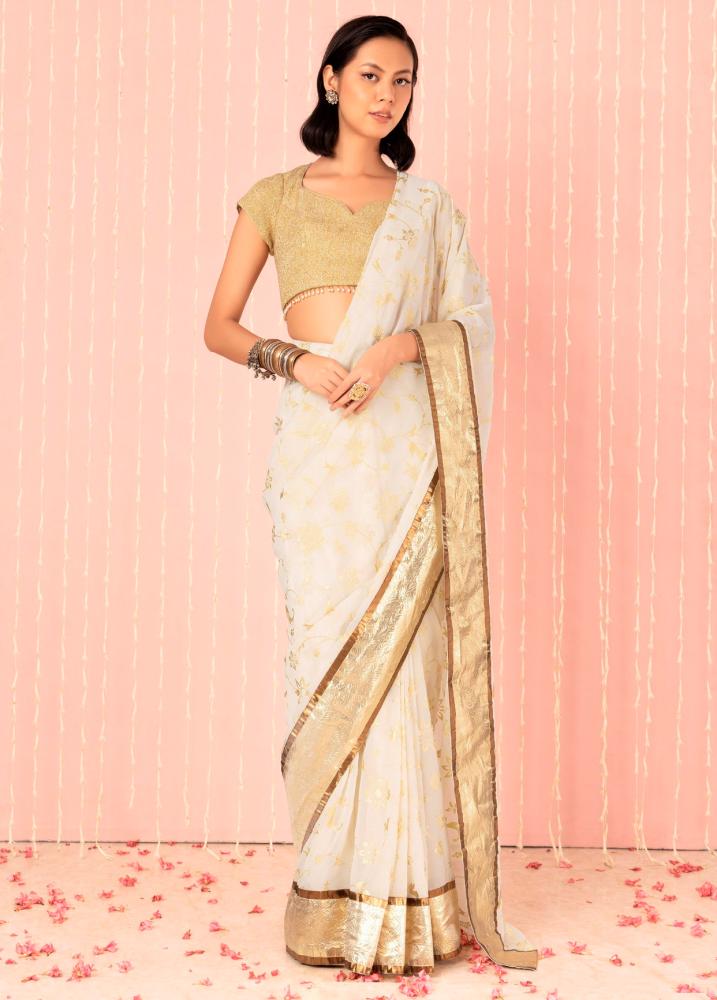
Contemporary twist
Those who loves fusion chic such as Indo-Western styles can head over to Indya KL, located at Jalan Tun Sambanthan in Brickfields. The outlet carries diverse options, including ready-made sarees that are contemporary, easy-to-wear and unconventional when it comes to the fabric and silhoutte.
Apart from the usual slip-on skirt, saree blouse and detachable drape that makes up the ready made sarees, there are ready-made saree dresses, saree pants and various combinations if you want to make a fashion statement this Deepavali.
These sarees are made of materials such as georgette, chiffon or organza with ruffles, pleats and tiers accent. These sarees are paired with du jour blouse designs such as off-shoulder frill tops, ruffle tops, asymmetrical crop tops and A-line tops.
These sarees are paired with du jour blouse designs such as off-shoulder frill tops, ruffle tops, asymmetrical crop tops and A-line tops.
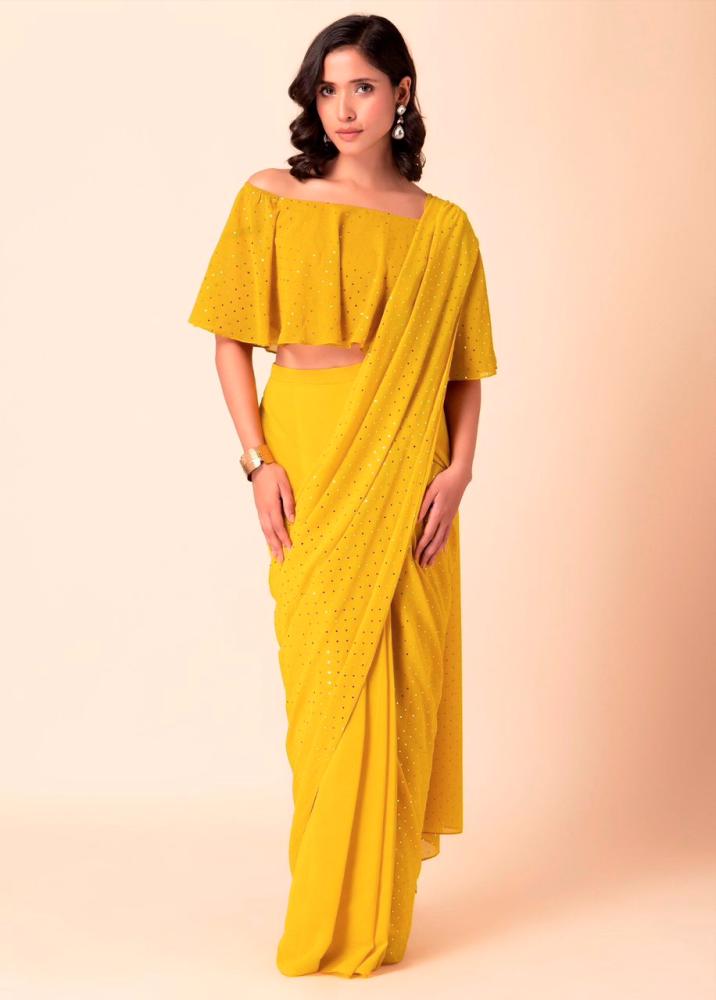
They also carry curated designer collections made in collaboration with the outlet.
One of such is the Nikhil Thampi collection that features creations such as an ivory floral foil-printed pre-stiched georgette saree and a hot pink foil-printed one-shoulder anarkali-kurta (saree gown) in silk.
Sarees have been worn by Indian women for many decades. Whether to mend the fields or celebrate a festival, this nine yards of material is not merely clothes but an extension of the Indian culture and life itself.
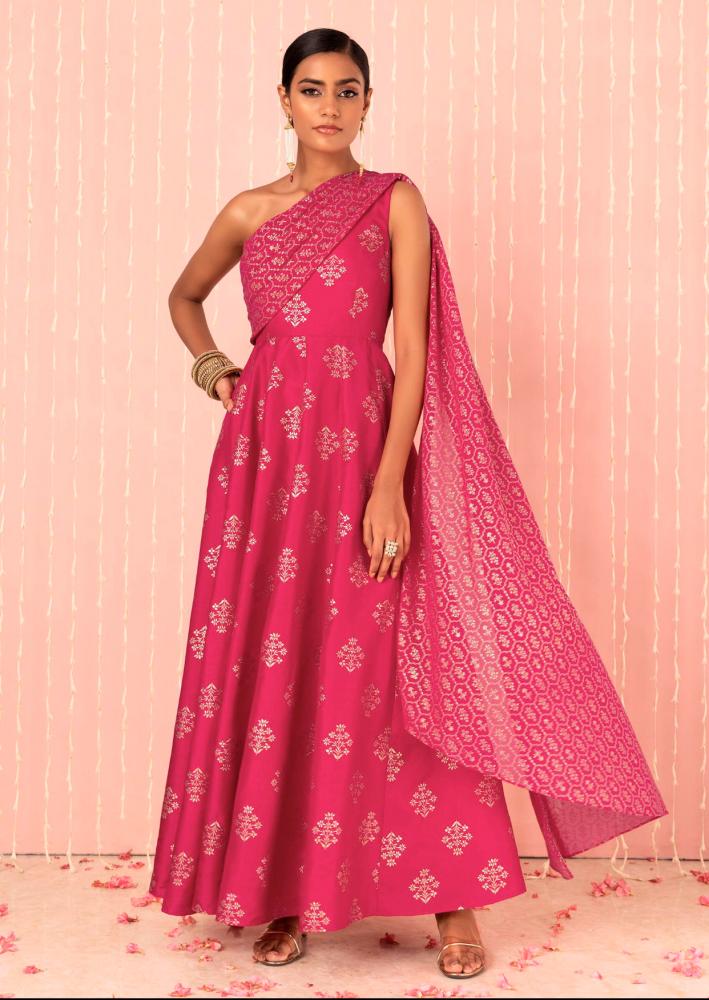
A piece of cloth that was simply meant for functionality have somehow find itself within the high fashion society while still being accessible to the masses.
So, when picking the most trendy saree to wear this Deepavali, remember to honour its origin and evolution as you drape it with pride – every weave is a story to tell. Happy Deepavali!



